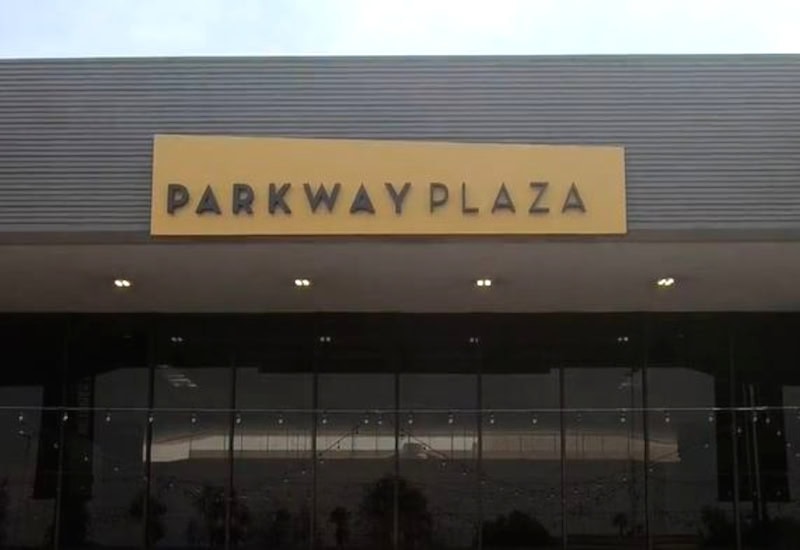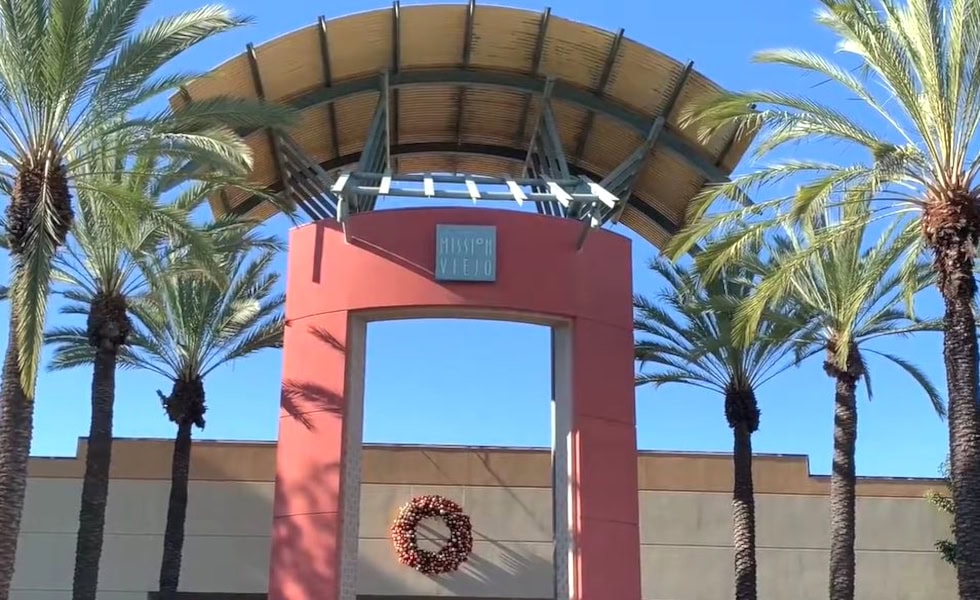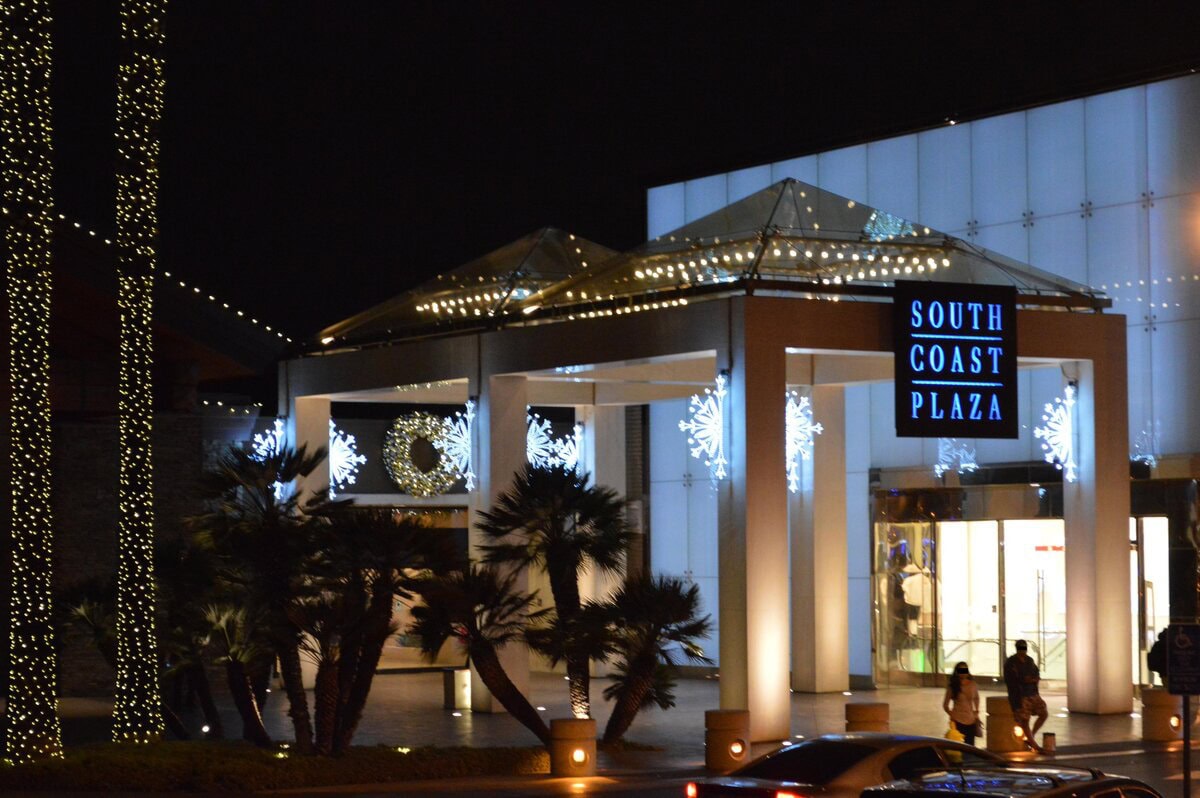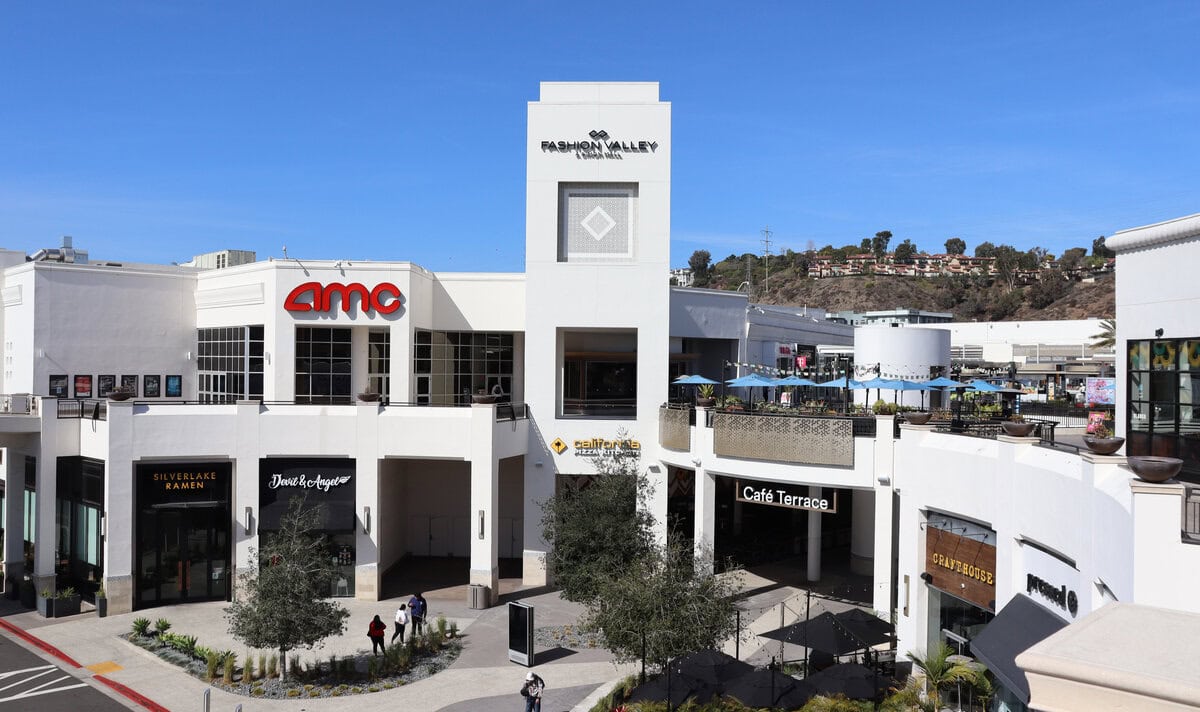The Genteel Dream
La Jolla Village Square opened in 1979 in San Diego, California, and it was certain that it was something special.
It was built by May Centers, the mall-making branch of The May Department Stores Company, and it carried that corporate confidence: an enclosed, air-conditioned mall that imagined shopping as an art form.
Bullocks Wilshire stood on one end, May Company California on the other, each a monument to suburban prosperity.
The two anchors framed a long interior lined with boutiques, skylights tilted like origami wings, and rafters painted a glossy enamel green.
The place looked serious about style. Gray concrete buttresses held up walls of tan brick.
A baby grand piano sat by the escalators, playing to whoever wandered close enough to listen.
Overhead, classical Muzak floated down from unseen speakers.
The San Diego Reader, writing in 1982, called it the city's "carriage-trade center," which said it all.
The mall was meant for people who liked their shopping quiet and their air conditioning cold.
But from the start, something felt off. A mile east, University Towne Centre was getting all the attention.
It was bigger, busier, and better connected, with six department stores and more than a hundred and fifty shops.
While UTC buzzed, La Jolla Village Square stayed calm, almost too calm, like a cocktail party that never quite filled up.
The Long Fade
By January 1981, the piano was still playing, but the mood had changed.
CBS 8 reported that the two-year-old mall "was not doing the business owners would like to see." Management cut rents in half, a quiet acknowledgment that the dream had slipped.
The trouble wasn't a mystery; it was math.
Two malls, one affluent neighborhood, and only so much appetite for designer scarves and imported crystal.
Through the eighties, La Jolla Village Square tried to keep up appearances.
It was elegant but eerily calm, a beautiful house where the dinner guests never showed.
By 1988, May Centers was ready to sell.
A deal with T&S Development collapsed just before the finish line, a missed heartbeat in an already uncertain body.
Two years later, a plan emerged to balloon the property to 1.2 million square feet, complete with new parking garages and fresh development on adjoining land.
The city approved it, but financing failed, and the expansion became another unrealized sketch.
In a region booming with corporate growth and suburban ambition, La Jolla Village Square had become something unusual: an upscale ghost.
It wasn't abandoned, but it was adrift, a relic of a confidence the decade no longer shared.
A Radical Rewrite
The turnaround came in 1992, when May Centers finally sold the property to Gordon/Beck Ventures, a partnership between Sheldon Gordon and Tony Beck.
Both were retail veterans, the sort of men who saw buildings as stories waiting for a rewrite.
Gordon had helped create the Beverly Center in Los Angeles, Beck had overseen real estate for Dayton-Hudson and Carter Hawley Hale, and together they decided to do the unthinkable: take an elegant, enclosed mall and blow it open.
Their plan was not cosmetic. It was philosophical. The words "regional mall" disappeared from the vocabulary.
In their place came a new term from the early nineties retail lexicon: "power center." The concept was blunt.
Forget fashion. Forget fountains. Focus on value.
Cater to what the International Council of Shopping Centers called "power shoppers" - people who came with purpose and left with bags, not memories.
The $50 million plan that followed stripped the mall to its bones.
May Company and I. Magnin would close. The interior concourse would be sealed off.
Every shop would get an outdoor entrance. A 400-car underground garage would go in.
In its place, Gordon and Beck built a shopping plaza that was less Versailles, more supply chain.
Where chandeliers once hung, Whole Foods and Sav-on Drugs would rise.
A 12-screen AMC theater would anchor the center, its lobby occupying what little remained of the interior mall.
When the AMC La Jolla 12 opened on December 8, 1994, it marked the end of an era and the start of something humbler but more durable.

The Power Center Years
Against the odds, the gamble paid off.
When La Jolla Village Square reemerged in the 1990s, it was smaller in ambition but sharper in purpose.
The luxury names were gone, replaced by tenants that dealt in routine rather than refinement: a grocery store, a pharmacy, a shoe outlet, a movie theater.
The place traded marble for concrete and Muzak for background chatter.
By the late nineties, Tower Records had moved in, filling the old silence with guitars and drums instead of piano notes.
Homart Development Company, which had passed on buying the property, once said the center would never break free from UTC's gravitational pull.
They were partly right. The shadow was still there, but the fight had changed.
The new version of La Jolla Village Square wasn't trying to compete anymore; it was adapting, finding its own niche in the rhythms of daily life.
It was not glamorous, but it was alive.
Shoppers came for groceries, stayed for coffee, and maybe caught a movie before heading home.
The old dream of elegance was gone, replaced by something plainer and more durable.
The center no longer needed applause. It just needed traffic. And in retail, that was enough to win.
Anatomy of a Reinvention
Walk through La Jolla Village Square today, and you can still trace the outline of what it used to be.
The gray concrete columns are still there, straight and silent, like the ribs of something built to last longer than it should have.
The mall that was once sealed off and air-conditioned has been opened to the sky.
The sun hits the walkways now, and the ocean air slides through.
Above the AMC entrance, a few old skylights remain, ghostly reminders of the years when this place was meant to feel exclusive.
What's changed is how people move through it. Nobody strolls here anymore - they move.
Trader Joe's and Ralphs sit side by side near the center.
Ross anchors one end, Marshalls the other.
DSW, PetSmart, and World Market hold the middle ground, surrounded by small shops that come and go with the seasons.
Every storefront faces the parking lot, because convenience, not atmosphere, is the draw.
The piano that once played by the escalators is long gone, as are the giant Christmas figures.
Now it's grocery bags, takeout cups, and movie posters.
The outside world finally caught up with the place.
The Nobel Drive and Interstate 5 interchange, finished in 1991, fixed what used to be its biggest flaw: isolation.
Villa La Jolla Drive carries close to 150,000 cars a day now.
The new Nobel Drive light rail station sits almost at the front door.
The same geography that once kept the mall quiet now feeds it, sending a steady stream of cars, students, and locals through its open-air maze.

The Everyday Square
What makes La Jolla Village Square work today isn't spectacle, it's geography.
The center sits in the middle of a high-density pocket that includes UC San Diego, Scripps Institution of Oceanography, UC San Diego Health, and the La Jolla Village apartment clusters.
Its regulars aren't tourists; they're locals on lunch breaks or students on grocery runs.
You see them moving in the steady rhythm: grad students with iced coffee, lab techs juggling takeout, parents dropping kids at My Gym before a Pilates class next door.
The data backs it up. The center draws about half a million visits every month from roughly 157,000 people.
They stay just under an hour on average.
Within three miles, three-quarters of residents have college degrees, and average household income hovers around $117,000.
It's a crowd that's educated, busy, and deeply practical.
The lineup reflects that. Starbucks and Chipotle take care of quick lunches.
Urban Plates and The Kebab Shop handle the sit-down crowd.
Trader Joe's and Ralphs sit in the middle of it all, anchoring the routine.
Club Pilates, Redflo Yoga, and La Jolla Fencing Academy fill the early hours; the AMC theater takes the nights.
It isn't flashy and doesn't try to be.
La Jolla Village Square has become what it should have been all along: a place that fits neatly into people's days instead of demanding to define them.
A Subtle Second Act
In 2024, La Jolla Village Square started changing again.
Chick-fil-A opened along Nobel Drive in July and was busy right away.
Students came from UCSD, commuters stopped in for lunch, and families swung by on the way home.
That same month, Tous les Jours opened a few doors down.
The bakery smelled like coffee and butter, and the display cases were filled with neat rows of pastries.
In October 2025, Barnes & Noble opened between World Market and PetSmart.
The store is about 14,000 square feet. Children's author Pam Fong cut the ribbon at the opening event.
These new spots gave the center a little more life.
The bakery and the bookstore made it feel warmer and less like a place you just ran errands.
La Jolla Village Square isn't fancy anymore, but it feels comfortable.






